The United States is a vast country with diverse ecosystems ranging from arctic tundra to tropical wetlands, creating countless ecological niches for unique wildlife. While many species range across multiple states, some remarkable creatures are endemic to just one state, making them living symbols of regional biodiversity. These animals have adapted to specific environments over thousands or millions of years, evolving traits that allow them to thrive in their particular habitats. From tiny desert-dwelling fish to colorful island birds, these species tell fascinating stories of evolution, adaptation, and in many cases, conservation challenges. Let’s explore 17 extraordinary animals that call just one U.S. state home, highlighting what makes them special and why protecting their limited habitats is so crucial.
1. Hawaiian Monk Seal (Hawaii)
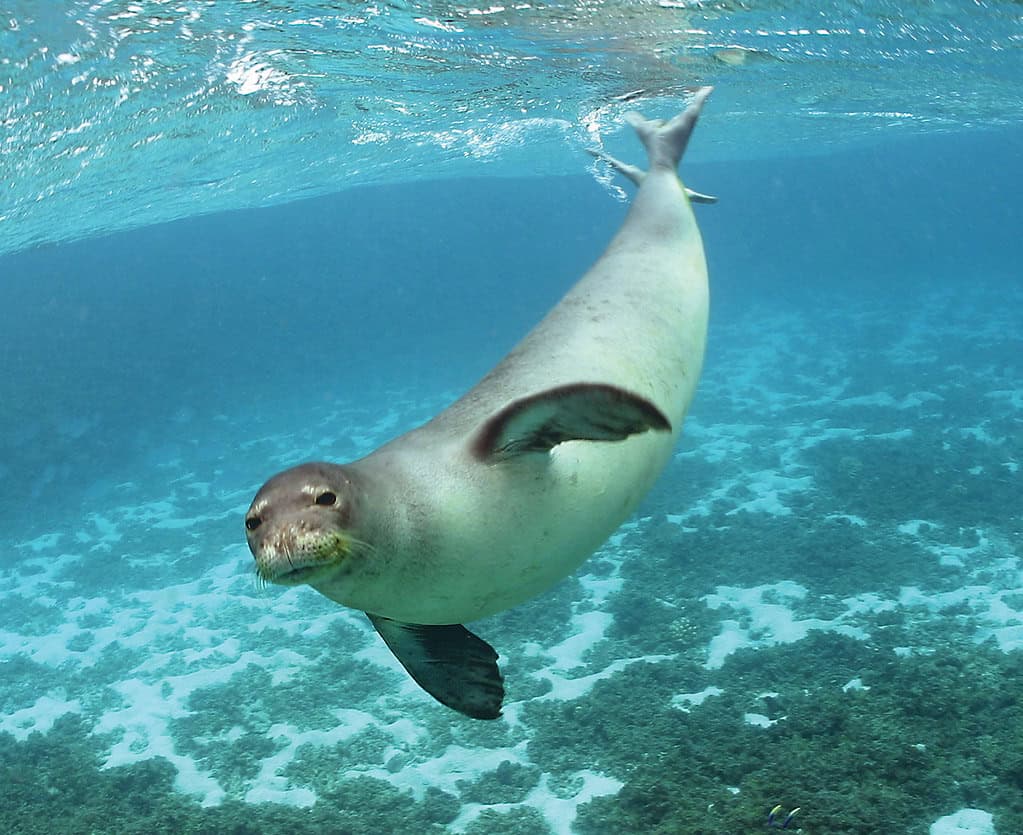
The Hawaiian monk seal (Neomonachus schauinslandi) is one of the rarest marine mammals in the world, found exclusively in the Hawaiian archipelago. These charismatic pinnipeds have dark gray to brown fur that fades to a lighter shade on their underside, and they typically grow to about 7 feet long and weigh between 400-600 pounds. The species is thought to have inhabited the Hawaiian Islands for several million years, evolving in isolation from other seal populations.
With fewer than 1,400 individuals remaining, the Hawaiian monk seal is critically endangered. Their decline has been attributed to a combination of habitat loss, entanglement in marine debris, disease, and human disturbance. Conservation efforts include habitat protection, rescue and rehabilitation programs, and public education campaigns to reduce human impacts. The seal plays an important cultural role in Hawaiian mythology and is known as ‘Ilio-holo-i-ka-uaua, which translates to “dog that runs in rough water.”
2. Florida Panther (Florida)
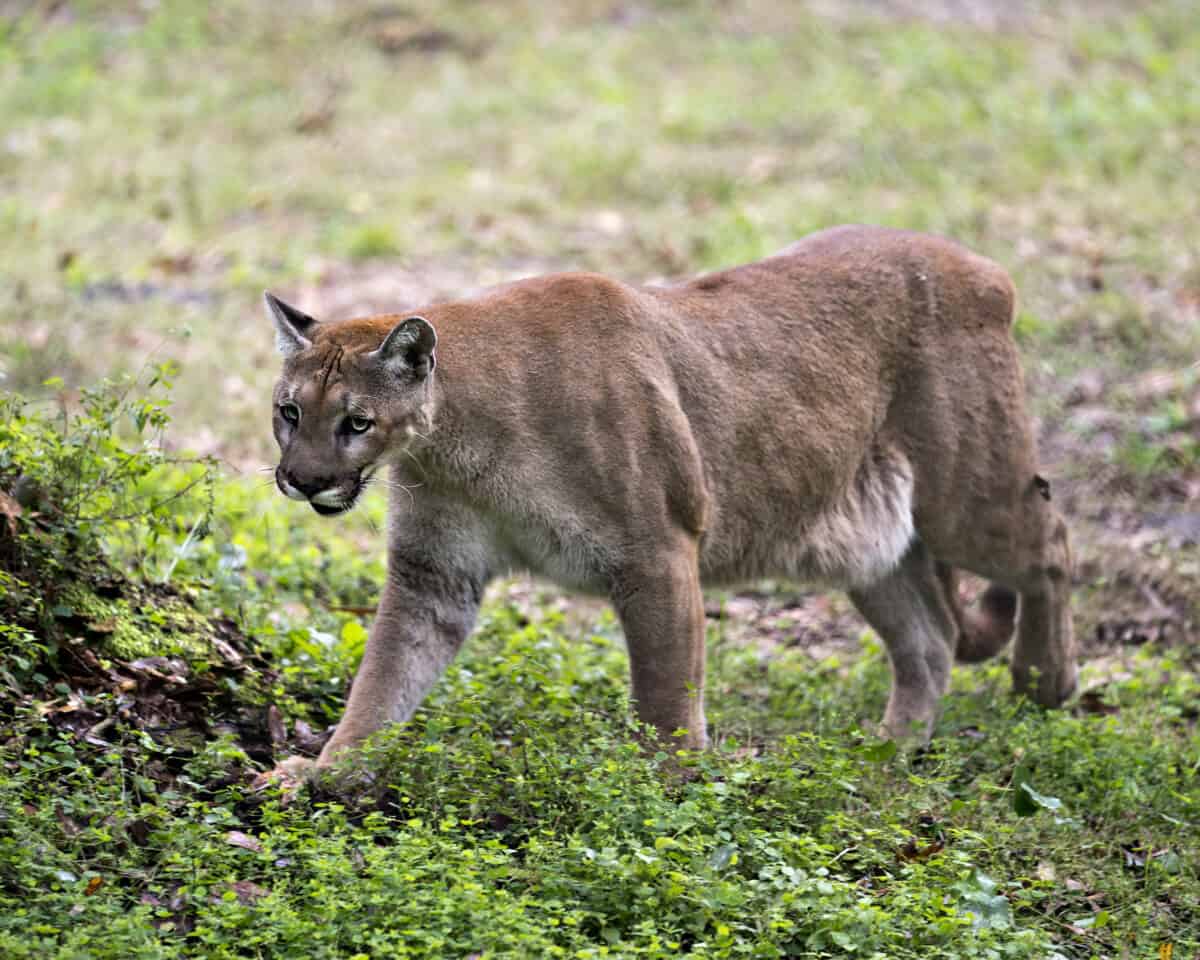
The Florida panther (Puma concolor coryi) is a subspecies of mountain lion that exists only in the swamps and forests of southern Florida. Once ranging throughout the southeastern United States, this magnificent cat now occupies less than 5% of its historic range. Slightly smaller and darker than other mountain lion subspecies, adult males weigh about 120-160 pounds and can reach over 7 feet in length from nose to tail. Their adaptations to the humid subtropical environment include broader paws for walking on wet ground and slightly shorter legs than western mountain lions.
With an estimated population of just 120-230 individuals, the Florida panther remains one of the most endangered mammals in North America. Their limited numbers resulted from hunting, vehicle collisions, and extensive habitat loss due to development. Conservation efforts include wildlife underpasses to reduce road mortality, habitat preservation, and a genetic restoration program that introduced female Texas pumas in the 1990s to address inbreeding concerns. This iconic predator serves as both Florida’s state animal and an umbrella species whose protection benefits countless other plants and animals sharing its ecosystem.
3. Devil’s Hole Pupfish (Nevada)

The Devil’s Hole pupfish (Cyprinodon diabolis) may be the vertebrate with the smallest natural range of any in the world. These tiny iridescent blue fish, rarely growing larger than an inch long, exist only in a single limestone cavern in the Nevada desert called Devil’s Hole. The fish live primarily on a small underwater shelf measuring just 6 by 13 feet, making their habitat smaller than many living rooms. This isolated population has been separated from other pupfish for between 10,000 and 20,000 years, adapting to water that maintains a constant temperature of 93°F and low oxygen levels.
With typically fewer than 200 individuals existing at any time, the Devil’s Hole pupfish perpetually teeters on the edge of extinction. Threats include groundwater pumping that affects water levels, contamination, and natural disasters like earthquakes or floods that could drastically alter their tiny habitat. Since 1967, the species has been protected under the Endangered Species Act, with extensive security measures including surveillance cameras, fencing, and regular population monitoring. Their continued survival represents both a conservation challenge and a remarkable example of evolution in an extreme environment.
4. California Condor (California)
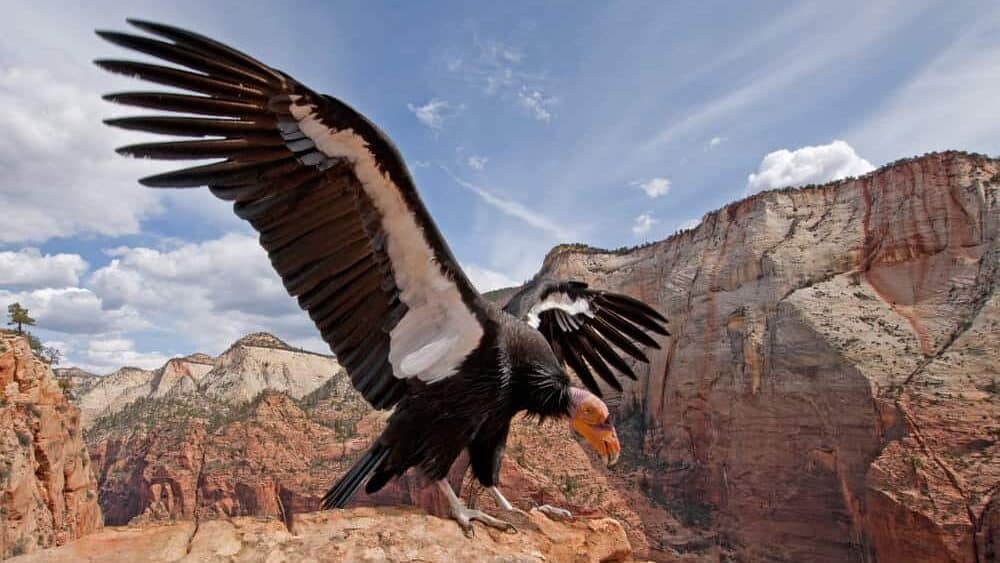
The California condor (Gymnogyps californianus) is North America’s largest land bird, with a wingspan stretching up to 9.5 feet and weighing up to 25 pounds. Once ranging across much of the western United States, by 1987, this magnificent scavenger was reduced to just 22 individuals in the wild, all in California. Their distinctive appearance includes a bald head that changes color with emotional state, from yellow to bright red, and a massive black body with white triangular patches visible under the wings during flight. These birds can soar for hours without flapping, using thermal updrafts to travel up to 150 miles in search of carrion.
Thanks to one of the most intensive conservation efforts ever undertaken, California condors have slowly increased to about 300 wild birds, with most found in California but reintroduction programs also operating in Arizona and Baja California. However, technically the wild-breeding population remains endemic to California. Threats continue to include lead poisoning from ammunition in consumed carcasses, power line collisions, microtrash ingestion, and habitat loss. Each wild condor is monitored with tracking devices, and many are captured periodically for health assessments. As a culturally significant species for many Native American tribes and an ecological engineer that cleans landscapes of carrion, the California condor’s recovery represents both a conservation triumph and an ongoing challenge.
5. Key Deer (Florida)
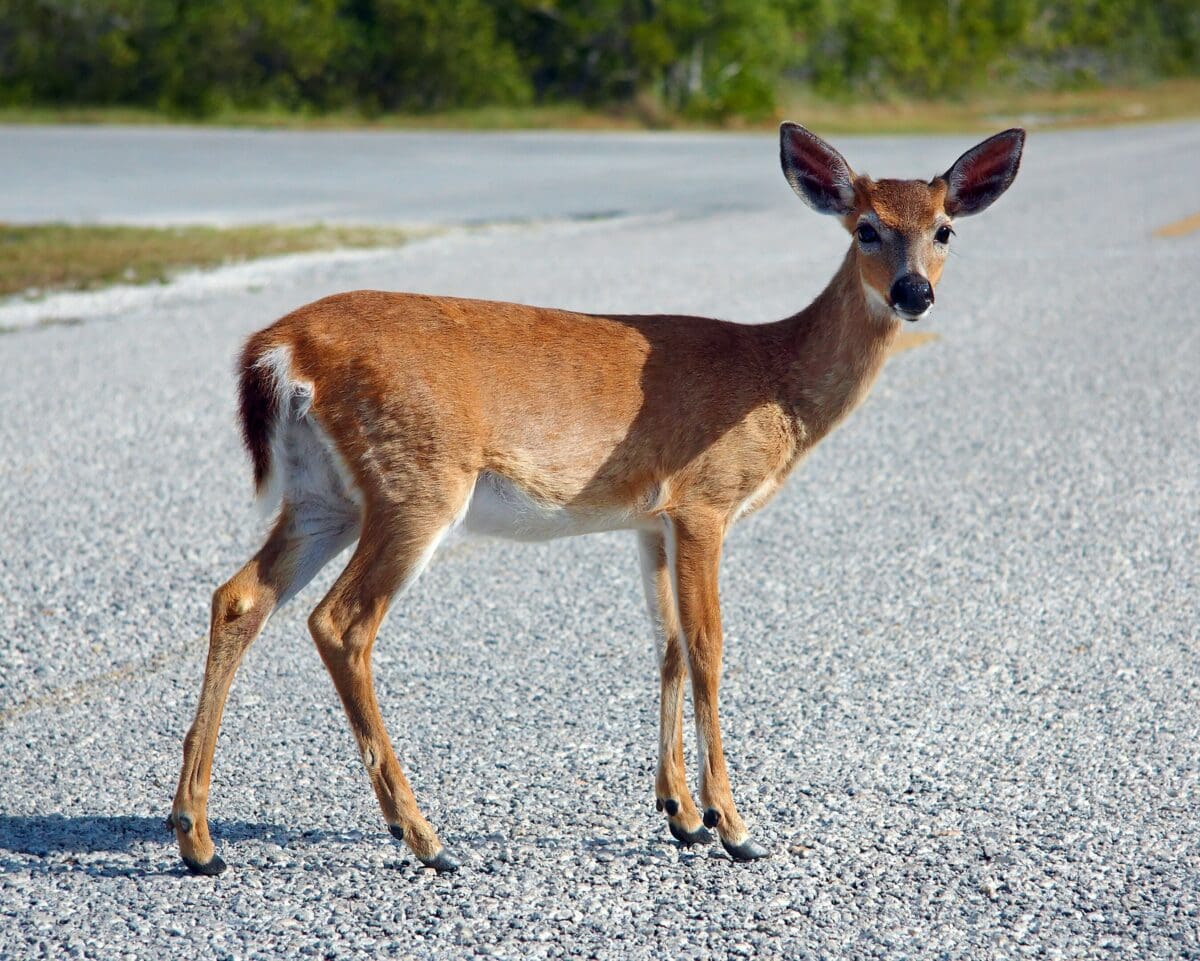
The diminutive Key deer (Odocoileus virginianus clavium) is the smallest subspecies of white-tailed deer in North America, standing just 24-32 inches at the shoulder and weighing between 55-75 pounds for bucks (males) and 45-65 pounds for does (females). Found exclusively in the Florida Keys, primarily on Big Pine Key and a few surrounding islands, these deer evolved their smaller size through a process called insular dwarfism after becoming isolated on the islands roughly 10,000 years ago. They’ve adapted to island life by developing the ability to drink slightly brackish water and browse on mangrove vegetation unavailable to mainland deer.
Once hunted to near extinction with as few as 25 individuals remaining in the 1950s, conservation efforts have helped the population recover to approximately 700-800 deer today. The establishment of the National Key Deer Refuge in 1957 provided crucial protection, but these unique animals still face significant threats. Vehicle collisions remain the leading cause of mortality, while habitat loss from development, sea-level rise from climate change, and potential disease outbreaks threaten their future. Despite these challenges, the Key deer has become a beloved symbol of the Lower Florida Keys and an ambassador for conservation efforts throughout the island chain.
6. Island Fox (California)

The Island fox (Urocyon littoralis) comprises six subspecies, each endemic to a single Channel Island off the coast of California: San Miguel, Santa Rosa, Santa Cruz, San Nicolas, Santa Catalina, and San Clemente Islands. About the size of a house cat, these diminutive foxes evolved from mainland gray foxes that reached the islands perhaps 10,000-16,000 years ago. Standing just 12-15 inches tall and weighing 2-6 pounds, they’re about 25% smaller than their mainland ancestors—another example of insular dwarfism. Each island’s fox population has developed unique genetic characteristics and slight variations in size and coloration, making them one of the best examples of rapid evolution among mammals.
The Island fox’s story includes both a dramatic decline and a remarkable recovery. In the 1990s, golden eagle predation and disease caused populations on several islands to crash by over 90%, leading to their endangered species listing. Through intensive conservation efforts including captive breeding, golden eagle removal, bald eagle reintroduction (which don’t prey on the foxes), and disease management, all subspecies have rebounded dramatically. By 2016, three subspecies were removed from the endangered list in what’s considered one of the fastest recoveries of a mammal under the Endangered Species Act. Despite this success, the foxes remain vulnerable to introduced diseases, climate change impacts, and habitat alterations, requiring ongoing monitoring and protection.
7. Gila Monster (Arizona)
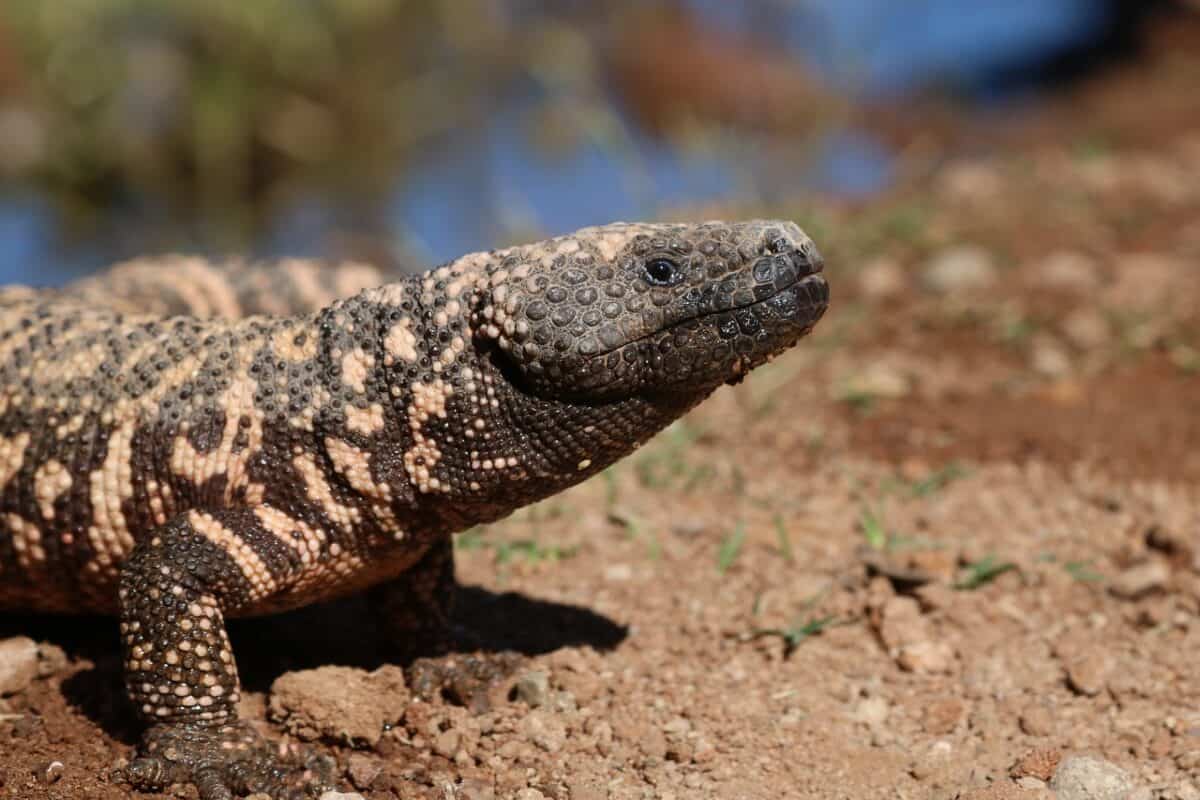
The Gila monster (Heloderma suspectum) is one of only two venomous lizard species in the world and the only one native to the United States. While occasionally spotted in small areas of adjacent states, its primary range and breeding population is centered in Arizona’s Sonoran Desert. Growing up to 2 feet long and weighing up to 5 pounds, these distinctive reptiles have beaded, black scales with dramatic patterns of pink, orange, or yellow markings. Unlike venomous snakes that inject venom through hollow fangs, Gila monsters have venom glands in their lower jaws and deliver venom through capillary action along grooved teeth while chewing on their prey.
Gila monsters spend approximately 95% of their lives underground in burrows, emerging primarily during the spring breeding season and summer monsoon periods. Their slow metabolism allows them to store fat in their tails and live off just three or four large meals annually, typically consisting of small mammals, birds, and eggs. The Gila monster’s venom has proven medically valuable, with a synthetic version of one of its hormones (exendin-4) now used in a medication to treat type 2 diabetes. While not endangered, the species is protected under Arizona state law, with collection or killing of Gila monsters prohibited. Habitat destruction, road mortality, and illegal collection for the pet trade remain the primary threats to this iconic desert dweller.
8. Salt Creek Tiger Beetle (Nebraska)

The Salt Creek tiger beetle (Cicindela nevadica lincolniana) is one of the rarest insects in North America, existing only in the eastern Nebraska saline wetlands near Lincoln. These predatory beetles measure just half an inch long and are distinguished by their metallic brown to olive green bodies with cream-colored markings. Named for their tiger-like hunting behavior, they sprint across the salt flats to capture prey with their large mandibles, capable of reaching speeds equivalent to a human running 480 miles per hour. Their larvae develop in burrows in the salt-encrusted soil, where they lie in wait for passing prey.
With fewer than 500 individuals remaining in the wild, the Salt Creek tiger beetle was listed as endangered in 2005. Their decline is directly tied to the loss of over 90% of Nebraska’s eastern saline wetlands due to urban development, agricultural conversion, and stream channelization that altered the natural salt hydrology. Conservation efforts include habitat restoration, captive rearing programs at the Omaha Henry Doorly Zoo, and land acquisition to protect remaining salt flats. Despite their small size, these beetles serve as crucial indicators of the health of Nebraska’s unique saline wetland ecosystem, one of the rarest and most endangered ecosystems in the United States.
9. Texas Blind Salamander (Texas)

The Texas blind salamander (Eurycea rathbuni) is a striking example of evolution in extreme environments, found exclusively in the water-filled caves of the Edwards Aquifer near San Marcos, Texas. These pale, ghostlike amphibians have adapted completely to life in permanent darkness, developing several distinctive features: they lack eyes, having only small dark spots where eyes would normally form; their skin lacks pigmentation, giving them a translucent pinkish-white appearance that allows their internal organs to be visible; and they possess external, feathery red gills that remain throughout their lives. Growing to about 5 inches in length, they navigate their underwater environment using sensory organs that detect vibrations and chemicals.
Federally listed as endangered since 1967, the Texas blind salamander faces threats primarily related to water quality and quantity. Urban development above the Edwards Aquifer introduces pollutants, while groundwater pumping for agricultural and municipal use threatens water levels in their cave habitats. Conservation efforts include aquifer protection zones, water use restrictions during droughts, and a captive breeding program at the San Marcos Aquatic Resources Center. Research on these remarkable creatures continues to yield insights into adaptation to extreme environments and the interconnectedness of groundwater systems, making them not only a biological curiosity but an important flagship species for aquifer conservation in Texas.
10. ‘I’iwi (Hawaii)

The ‘I’iwi or Scarlet Hawaiian honeycreeper (Vestiaria coccinea) is one of Hawaii’s most iconic birds, with its brilliant scarlet plumage, black wings, and long, curved salmon-colored bill. Once abundant throughout the Hawaiian archipelago, these striking birds are now primarily restricted to high-elevation forests on the Big Island, Maui, and Kauai. The ‘I’iwi’s specialized curved bill evolved to feed on the nectar of lobelioid plants, demonstrating a classic example of coevolution. These birds play a crucial ecological role as pollinators in Hawaii’s native forests, with their feathers becoming dusted with pollen as they feed, transferring it between flowering plants.
The ‘I’iwi population has declined dramatically, primarily due to introduced avian malaria and avian pox carried by non-native mosquitoes. Unlike mainland birds, Hawaiian honeycreepers evolved without exposure to these diseases and lack resistance. Climate change presents an additional threat, as warming temperatures allow mosquitoes to survive at higher elevations, reducing the disease-free refuges available to the birds. Conservation efforts include habitat protection, predator control, and research into novel approaches such as mosquito control through genetic techniques and captive breeding programs. The ‘I’iwi’s Hawaiian name is onomatopoeic, mimicking their distinctive call, and they feature prominently in Hawaiian cultural traditions, including chants and featherwork.
11. Wyoming Toad (Wyoming)

The Wyoming toad (Anaxyrus baxteri) is one of America’s most endangered amphibians, found historically only in a small area of the Laramie Basin in Albany County, Wyoming. These stocky, brown-spotted toads typically measure 2-3 inches in length and were once abundant in the floodplains and irrigated meadows surrounding Laramie. They were only recognized as a distinct species in 1968, but by 1984—just sixteen years later—they had disappeared from the wild entirely. Their rapid decline has been attributed to a combination of factors, including habitat modification, pesticide use, predation by introduced species, and chytrid fungus, a pathogen devastating amphibian populations worldwide.
Thanks to an intensive recovery program involving multiple zoos, universities, and government agencies, Wyoming toads have been reintroduced to protected areas within their historical range. The Saratoga National Fish Hatchery and other facilities maintain captive breeding populations, producing thousands of tadpoles and toadlets for release each year. Despite these efforts, wild populations remain precarious, with ongoing challenges including limited genetic diversity, continuing disease threats, and habitat limitations. The Wyoming toad serves as both a symbol of Wyoming’s unique biodiversity and a stark reminder of how quickly species can decline when multiple threats converge on a geographically restricted population.
12. Alabama Beach Mouse (Alabama)

The Alabama beach mouse (Peromyscus polionotus ammobates) is a small, pale rodent that exists only along a narrow strip of coastal dunes in Baldwin County, Alabama. With their light buff-colored fur that provides camouflage against the white quartz sand, these mice measure just 5-6 inches from nose to tail tip and weigh less than an ounce. They’ve evolved several adaptations for coastal living, including the ability to obtain all their water from their food and seeds, keen nocturnal vision, and specialized burrowing behaviors that allow them to create stable tunnels in shifting sand dunes.
Listed as endangered since 1985, the Alabama beach mouse has lost more than 80% of its historical habitat to coastal development, with remaining populations fragmented into isolated pockets. They face additional threats from hurricanes, which can devastate their dune habitats, and predation by domestic cats and non-native fire ants. Conservation efforts include habitat protection through the Bon Secour National Wildlife Refuge, dune restoration projects, and construction guidelines requiring wildlife-friendly features in new coastal developments. These tiny mice play a surprisingly important ecological role by dispersing seeds of dune-stabilizing plants and serving as a prey base for native predators, making their conservation vital to the health of Alabama’s fragile coastal ecosystem.
- How Sloths Help Support Mini-Ecosystems in Their Fur - August 9, 2025
- Eagles vs. Snakes: Who Would Win? - August 9, 2025
- Why Pandas Were Once Nearly Extinct—and How China Saved Them - August 9, 2025
